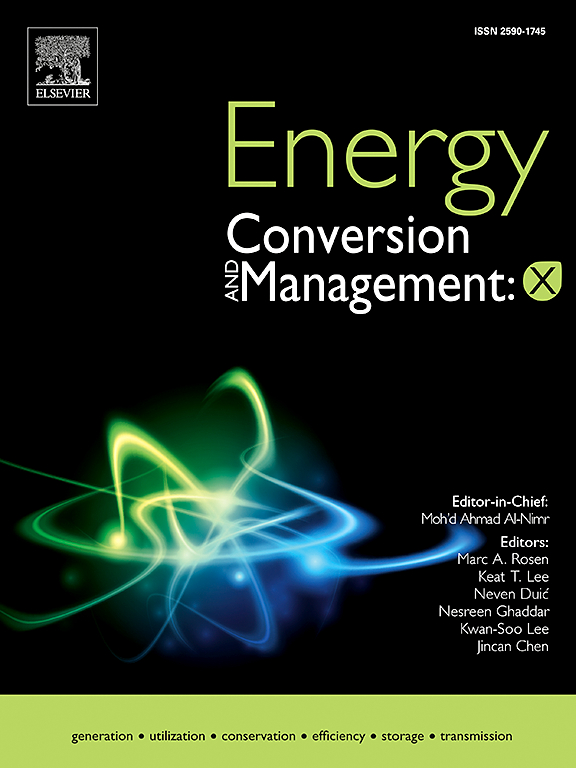Multivariate machine learning algorithms for energy demand forecasting and load behavior analysis
IF 7.1
Q1 ENERGY & FUELS
引用次数: 0
Abstract
This article presents deep learning frameworks for predicting electricity demand in the Western region of Bangladesh, utilizing Artificial Neural Network (ANN) and Adaptive Neuro-Fuzzy Inference System (ANFIS) algorithms. Critical hyperparameters, such as the number of hidden neurons in ANN and the number of input membership functions in ANFIS, are optimized to effectively capture uncertainties in load patterns. Short-term load forecasts from September 2023 to February 2024 incorporate meteorological and economic factors, achieving a low average MAPE of 1.72 % with the ANN network having sixteen hidden neurons, supporting dynamic grid operations. For strategic planning, medium- and long-term electricity projections integrate ANN and ANFIS with an econometric approach aligned with national policy, providing area-wide development-consistent forecasts. The annual peak load demand in Khulna and Rajshahi is projected to account for 70 % of the total load in the Western region, reaching 11.5 GW and 10 GW, respectively, by 2050. In contrast, Barisal is expected to have the lowest demand, requiring only 3 GW by 2050. Seasonal trend analyses indicate peak electricity demand during summer, while autumn exhibits greatest vulnerability in prediction accuracy. Forecast performance improves during winter, with average RMSE and MAPE reductions of 14.61 MW and 1.53 %, respectively, attributed to consistently lower load demand. On non-working days, energy demand decreases as economic activity slows, with total reductions averaging 71 MW more across the Khulna, Rajshahi, and Rangpur areas combined, owing to their higher concentration of industrial and commercial activities.
求助全文
约1分钟内获得全文
求助全文
来源期刊

Energy Conversion and Management-X
Multiple-
CiteScore
8.80
自引率
3.20%
发文量
180
审稿时长
58 days
期刊介绍:
Energy Conversion and Management: X is the open access extension of the reputable journal Energy Conversion and Management, serving as a platform for interdisciplinary research on a wide array of critical energy subjects. The journal is dedicated to publishing original contributions and in-depth technical review articles that present groundbreaking research on topics spanning energy generation, utilization, conversion, storage, transmission, conservation, management, and sustainability.
The scope of Energy Conversion and Management: X encompasses various forms of energy, including mechanical, thermal, nuclear, chemical, electromagnetic, magnetic, and electric energy. It addresses all known energy resources, highlighting both conventional sources like fossil fuels and nuclear power, as well as renewable resources such as solar, biomass, hydro, wind, geothermal, and ocean energy.
 求助内容:
求助内容: 应助结果提醒方式:
应助结果提醒方式:


